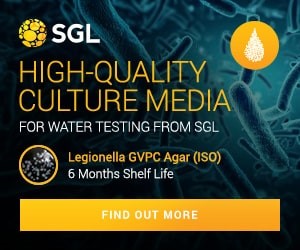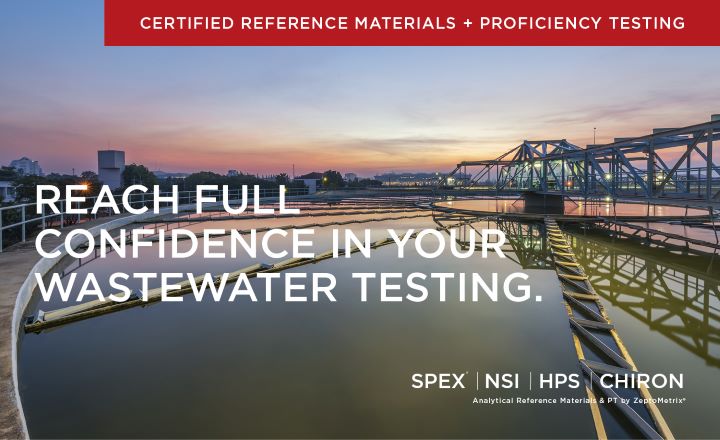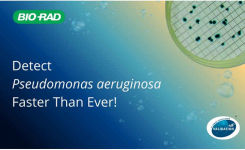
Key Points
- VTEC serogroup O157 is the most important but others, such as O26 and O145, should not be overlooked. A major German outbreak in 2011 was caused by O104
- Traditional methods can take up to five days to produce a result.
- A wide range of time-saving rapid methods are commercially available, providing a result within 24 hours.
- Methods for detection of non-O157 VTEC are not widely available.

The Gram-negative non-spore-forming bacterial species Escherichia coli belongs to the Enterobacteriaceae and is also a member of the coliform group.
The species is a part of the normal gut microflora in humans and animals and its presence in food and water is often interpreted as an indicator of faecal contamination. Most strains of E. coli are non-pathogenic, but some do cause gastroenteritis or more serious infections.
One group in particular is of great concern to food microbiologists. The verocytotoxin-producing E. coli (VTEC) group is so called because its members produce toxins cytotoxic to a cultured cell line called vero cells.
The VTEC group is also sometimes referred to as the Shiga-like toxin-producing E. coli (STEC), especially in the USA. Some VTEC strains are able to cause serious foodborne infections, such as haemorrhagic colitis, in humans. These pathogenic strains are usually referred to as the enterohaemorrhagic E. coli (EHEC).
Serological analysis of VTEC isolates has identified more than 100 serogroups, but only a few of these are known to possess the EHEC virulence factors needed to cause serious infection in humans.
Pathogenic VTEC strains seem to have a very low infective dose, possibly because they are relatively resistant to acid conditions, and as few as ten cells may cause illness. Symptoms vary and many healthy adults suffer only mild diarrhoea or are asymptomatic. However, vulnerable individuals, especially children under five and the elderly, are more likely to develop serious infections and suffer from bloody diarrhoea, abdominal pain, vomiting and fever lasting for up to 10 days. But in a few cases the infection may cause a condition called haemolytic uraemic syndrome (HUS), which can lead to kidney failure and is sometimes fatal in young children. About a third of people with diagnosed with VTEC infection require hospital treatment. The low infective dose and the potential for serious infection are the main reasons why VTEC contamination in food is so significant.
E. coli O157 The most important EHEC serogroup in food is O157 and the most common serotype in foodborne infections is O157:H7. E. coli O157:H7 has caused major foodborne outbreaks in a number of countries, including the USA, the UK and other European countries. These outbreaks are typically associated with undercooked minced beef products like hamburgers and with unpasteurised dairy products, but outbreaks in the USA have also been linked to fresh produce, notably bagged fresh spinach. Cattle are the main reservoir for the pathogen, but their faeces can also contaminate watercourses used for irrigation.
An important characteristic of E. coli O157:H7 is its poor growth at 44-45°C, which may mean it is not detected by traditional tests for E. coli in food. It is also unusually acid-tolerant and has been reported to grow at pH values as low as 4.0-4.4 and survive in acid foods with a pH of 3.6. Fortunately it is not heat-resistant and can be destroyed during cooking. In the UK it is recommended that burgers be cooked to an internal temperature of at least 70°C for 2 minutes to destroy the pathogen.
Non-O157 VTEC Non-O157 VTEC strains are sometimes overlooked as causes of foodborne disease, but other serogroups have been identified in outbreaks related to food, most notably O26, O103, O111 and O145. For example, an outbreak in Germany and France in 2011 affecting at least 3,900 people was caused by a strain of the O104 serogroup. This major outbreak was associated with sprouted fenugreek seeds from Egypt and resulted in 48 deaths. A 2013 outbreak in the USA associated with frozen foods was caused by a strain from the E. coli O121 serogroup.
Comparatively little is known about non-O157 VTEC, but it seems likely that they share many of the characteristics of the O157 serogroup. It is probable that cattle are also a major reservoir for non-O157 VTEC, but other animals, especially ruminants, may also act as hosts.
Storage and preparation of samples
The majority of food samples examined for the presence of VTEC will be raw meat, especially beef, or unpasteurised dairy products. It is unusual for other food categories to be routinely tested for these pathogens.
Samples to be tested for VTEC should be refrigerated after collection and tested as soon as possible. Samples should not be frozen unless there is no alternative, although VTEC cells survive well at low temperatures and detection may still be possible.
Sample preparation typically requires homogenisation in a suitable enrichment broth or diluent.
Detection and isolation: Culture-based methods
O157 VTEC There is a current ISO horizontal method for the detection of VTEC O157 in food and feed. ISO 16654:2001 is recommended for monitoring food and feed in the EU and elsewhere and was reviewed and confirmed in 2012. The FDA Bacteriological Analytical Manual (BAM) includes a similar method, although a real-time PCR assay is now preferred.
For the ISO 16654 method the first stage is an enrichment culture in a modified tryptone soya broth supplemented with 20mg/l of the antimicrobial novobiocin. Typically 25g of sample is homogenised with 225ml of enrichment medium and incubated at 41.5°C for 6 hours.
An immuno-magnetic separation (IMS) procedure is carried out at 6 hours and again at 12-18 hours using commercially available magnetic beads coated with antibodies specific to VTEC O157. The beads are plated out onto two selective agar media. One of these must be sorbitol MacConkey agar supplemented with cefixime and potassium tellurite (CT-SMAC). This medium exploits the inability of VTEC O157 to ferment sorbitol within 24 hours to differentiate colonies from those of other E. coli. The second selective agar can be chosen from a range of commercially available chromogenic available media. The plates are incubated for 18-24 hours at 37°C and examined for typical VTEC O157 colonies.
Up to five typical colonies from each medium are then subcultured on a non-selective agar medium and tested for indole formation to confirm that the isolates are E. coli. Presumptive confirmation of VTEC O157 can be done serologically using a slide agglutination test, but conclusive identification and typing of pathogenic VTEC O157 should be done at a reference laboratory. This requires testing presumptive positive isolates using a PCR method to detect the genes necessary for toxin production (eae & vtx).
Non-O157 Currently there are no standard culture-based methods for non-O157 VTEC. Most non-O157 VTEC strains will ferment sorbitol and commercial selective agar media are lacking. However, a few media selective for other VTEC serogroups have been developed, such as a modified CT-SMAC medium for VTEC O26, in which rhamnose is substituted for sorbitol, and a chromogenic O26 medium. The ISO 16654 method has also been adapted by using IMS beads coated with antibodies specific for other important serogroups and modified selective agars. Recently, researchers from the United States Department of Agriculture (USDA) published details of a selective chromogenic medium for the detection of the six non-O157 STEC serogroups (O26, O45, O103, O111, O121 & O145) that must now be routinely screened for in meat samples in the USA.
Detection and isolation: Rapid Methods
O157 Concerns about O157 VTEC contamination in foods have led to the development of a number of rapid methods for their detection and isolation and many of these are now available as commercial test kits and systems. Most are aimed at the meat industry and are designed for testing ground beef and similar products, but can also be applied to other foods where O157 VTEC contamination is suspected.
Immunoassay-based methods Many of the commercial products currently available are based on immunoassay technology. Results are available in 20-26 hours following an 18-24 hour enrichment step. Fully automated immunoassay systems are also available.
Adding an immuno-concentration step to the method can reduce incubation times and improve sensitivity. The concentrated sample can then be tested using an immunoassay or other detection method.
Several manufacturers have developed immunoassay technology to produce very simple-to-use immuno-chromatographic lateral flow assays. These are usually supplied with an enrichment broth and typically claim to provide a clear visual presence or absence result in 10-15 minutes after an enrichment step of only 8 hours, although a standard 20-24 enrichment as described in ISO 16654 can also be used.
Molecular biology-based methods (PCR) A significant number of commercial test kits and systems detecting O157 VTEC using PCR technology have been launched in the last 15 years, many of which include real-time detection. Using proprietary media and/or IMS a preliminary enrichment step can be reduced to as little as 6-8 hours. Results of the PCR assay are then available within a further four hours.
Confirmation Although rapid latex agglutination- based confirmation tests, such as the Remel Wellcolex® test, are available for O157 VTEC, final confirmation should still be done by a reference laboratory as above.
Non-O157
There is a current ISO horizontal method for the detection of STEC and the determination of O157, O111, O26, O103 and O145 serogroups. ISO/TS 13136:2012 is based on a Real-time PCR-based screening method for the stx and eae virulence genes. When one or both genes are detected, the STEC strain present should be isolated if possible for confirmation. The BAM PCR method is also able to detect some non-O157 STEC.
Currently, test kits specifically designed for detection of non-O157 VTEC in food samples are not widely available. However, several PCR-based kits designed to detect the USDA's "big six" serogroups in meat products are now available in the USA. These include the Hunter® system from Instantlabs Inc. Additionally, in the wake of the 2011 outbreak in Germany, Biotecon developed a foodproof® test kit for serogroup O104.
Get the latest updates in Rapid Microbiological Test Methods sent to your email? Subscribe to the free rapidmicrobiology eNewsletter






















